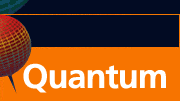CONTACTS
- Coordinator
Sebastian Deffner
-
Quantum Lunch Location:
T-Division Conference Room, TA-3,
Building 123, Room 121
 |


Quantum Institute: Visitor Schedule
The Quantum Lunch is regularly held on Thursdays in the Theoretical Division Conference Room, TA-3, Building 123, Room 121.
The organizing committee includes Malcolm Boshier (P-21), Diego Dalvit (T-4), Michael Di Rosa (C-PCS), Sebastian Deffner (T-4 & CNLS), Changhyun Ryu (P-21) , Nikolai Sinitsyn (T-4), Rolando Somma (T-4), Christopher Ticknor (T-1), and Wojciech Zurek (T-4).
For more information, or to nominate a speaker, contact Sebastian Deffner.
To add your name to the Quantum Lunch email list, contact Kacy Hopwood.
Thursday April 7, 2016
12:30 PM - 2:00 PM
Speaker: Francois Fillion-Gourdeau (University of Waterloo)
Technical Host: Sebastian Deffner
TOPIC: Numerical approaches for the understanding of Schwinger's pair production in multi-center systems (and some qubits along the way...)
Abstract
In the last few decades, new laser technologies have been developed allowing for unprecedented intensity levels, where relativistic and quantum electrodynamics effects could start to be important. Schwinger electron-positron pair production is one of the more interesting phenomena to investigate in this regime. However, the intensity required is still many orders of magnitude above the intensity reachable in actual or future experimental facilities.
In the first part of this talk, I will present a study of Schwinger-like pair production for multi-center systems immersed in a high intensity laser field. This mechanism is studied in a very simple one-dimensional model where the nuclei are modelled by delta function potential wells and the laser by a constant electric field. Owing to the Stark effect and the presence of resonance crossings, it is demonstrated that for certain parameters, the pair production rate can be enhanced significantly. This feature could eventually facilitate the detection of this phenomenon.
In the second part of this talk, a numerical method to solve the Dirac equation is presented. This method, based on operator splitting, alternate direction iteration and the method of characteristics, could be useful to study quantum relativistic physical phenomena in more realistic settings. Some of its properties are given, along with a few benchmark simulations that demonstrate its performance. Finally, I will describe an implementation of this technique on digital quantum computers. In particular, I will demonstrate that the resulting algorithm is efficient because the numerical method can be mapped to a quantum random walk.
|


